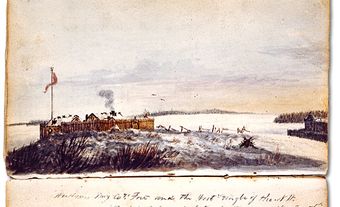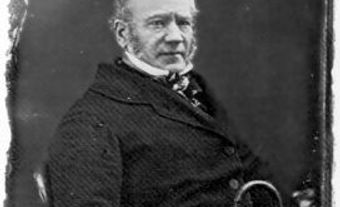Peter Skene Ogden, fur trader, explorer (born c. 1790 in Quebec City, QC; died 27 September 1854 in Oregon City, Oregon).

Peter Skene Ogden was one of the most important and turbulent personalities in the North American fur trade in the first half of the 19th century. He spent his first years in the fur trade as a servant (1809–21) of the North West Company. There, he gained an unenviable reputation for violence which delayed for two years his appointment as chief trader by the Hudson’s Bay Company after the merger of the two companies in 1821. In 1824, Ogden began a series of trapping expeditions to the Snake River country. Because it was assumed that this area south of the Columbia River would eventually go to the United States, Ogden’s instructions were to trap the country bare. He did this, and more, for on six separate expeditions he obtained a better knowledge of the puzzling geography of this region than any other explorer. In northern Utah, a city, valley, canyon and river were later named after him.
Overcoming natural hazards and rival American traders, and despite conflicts with Indigenous people, Ogden became the first person of European descent to reach the Humboldt River. He also sighted Great Salt Lake, and on his last expedition in 1830 probably reached the lower Colorado River. From 1831 to 1844, Ogden operated in British Columbia, at first based at Fort Simpson. Promoted chief factor in 1834, he spent 10 years commanding the New Caledonia district, where, for the first time, he was not faced with direct competition. In 1845, he was posted back to Fort Vancouver on the lower Columbia, which the Oregon Treaty of the next year placed in the US. As a result, the last years of Ogden’s career were spent trading in an area under foreign control, where settlers and prospectors were more visible than fur traders and Indigenous people.

 Share on Facebook
Share on Facebook Share on X
Share on X Share by Email
Share by Email Share on Google Classroom
Share on Google Classroom


